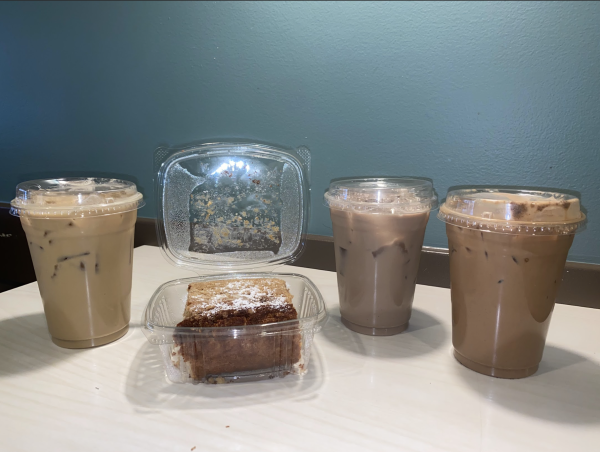Racial Fallout Rocks Colleges Nation-Wide
Protests Escalate Amid Heightened Tensions

November 24, 2015
On Monday November 9th, University of Missouri System President Tim Wolfe and Chancellor R. Bowen Loftin both resigned from their posts. This seemingly marked the end to an almost two-month long conflict involving a hunger strike, the football team threat to boycott their practices and games, and a campus rocked by the latest wave of protests over race in America.
The demonstrations began to protest a lack of response by President Wolfe to a complaint leveled by Missouri Student Body President and African-American Payton Head that an unknown group of individuals had yelled racial slurs at him from the back of a pick-up truck passing by off campus.
On Facebook, Head wrote after the incident that, “For those of you who wonder why I’m always talking about the importance of inclusion and respect, it’s because I’ve experienced moments like this multiple times at THIS university, making me not feel included here.” Chancellor Loftin was quoted by CNN calling the incident of the racial slurs, “Totally unacceptable.”
Protest escalated after this from two student events titled “Racism Lives Here” to demonstrate against a perceived lack of response from the administration. Later, on October 10th, a group of students, led by graduate student Jonathan Butler, from the student group “Concerned Student 1950” blocked the path of President Wolfe’s car in the Missouri homecoming parade. Ten days later the group issued a list of demands that include an apology from Wolfe and his resignation from office.
According to a US News article published on November 12th, after a police report confirmed a swastika was drawn in human feces in a residence hall bathroom, a meeting between Wolfe and leaders of the student movement occurred on October 26th that did not result in Wolfe’s agreement to meet their demands. Eight days later, Butler launched a hunger strike in which he said he would not eat until Wolfe leaves office and policies are put in place to combat racism at the University.
According to CNN on November 3rd, Butler stated, “Mr. Wolfe had ample opportunity to create policies and reform that could shift the culture of Mizzou in a positive direction, but in each scenario he failed to do so.” A student boycott soon began and the campus began to draw national media attention.
African-American members of the football team joined the boycott on November 8th when they announced that they would not practice or play any games, including November 12th’s matchup with BYU, until Wolfe left office.
They were joined in protest by the athletic department, the white members of the team, and Head Coach Gary Pinkel, who all gave their support to the movement. Coach Pinkel tweeted, “The Mizzou Family stands as one. We are united. We are behind our players. #ConcernedStudent1950.”
The next day, Missouri Student Government Association Executive Cabinet called for Wolfe to leave, stating that the administration had “undeniably failed us.” Later that day on November 9th, Wolfe and Loftin both resigned and Butler’s hunger strike ended.
It is worth noting that according to the Washington Post’s Philip Bump, the University would have had to pay football opponent BYU $1 million outright as a result of its contractual obligations and would have lost as much as $7 million in potential revenue for each of the two remaining home games had Wolfe not resigned and the player boycott ended.
Later that week on November 12th, more controversy arose when photojournalist Tim Tai was pushed and shoved while he debated his free speech rights to be at the protester’s makeshift camp. The camp is located in the campus quad which was designated a free-speech area in July when the governor of Missouri, Jay Nixon, signed into law a bill that designated all public college and university campuses “Free-Speech Zones.”
Professor Melissa Click came to the center of attention at the camp when she was caught on video calling for “some muscle” to remove the journalists who were photographing students who were forming a perimeter to create space around the camp itself. Professor Click was attempting to enforce an anti-media policy that the protestors had enacted to form “A No-Media Safe Space.” She was reprimanded later that week and resigned her honorary title as a Professor of Journalism but remained at the school at her post in the College of Arts and Sciences.
The protests have seen massive amounts of student support pouring out across campuses from Yale to Wisconsin to Claremont McKenna College, where a similar student protest caused the Dean of Students to step down. President Obama also praised the students in an interview with ABC’s George Stephanopoulos, saying that, “I think it is entirely appropriate for students in a thoughtful, peaceful way to protest what they see as injustices or inattention to serious problems in their midst,” but he also called for them to be open to a dialogue with faculty and a new administration over the problems that continue to haunt America.
Missouri’s protests are the latest wave in the continuing protests over racial tensions in America. The demonstrations mark over 400 straight days of protest in the state of Missouri since the 2014 police shooting of teenager Michael Brown, and comes on the heels of movements that include “I Can’t Breathe,” “Black Lives Matter,” and continue all the way back to the 2012 shooting of Trayvon Martin.
Amid continuing protests, it seems clear that the United States is in a period of extended social unrest unlike any since the Civil Rights movement of the 1960’s.




